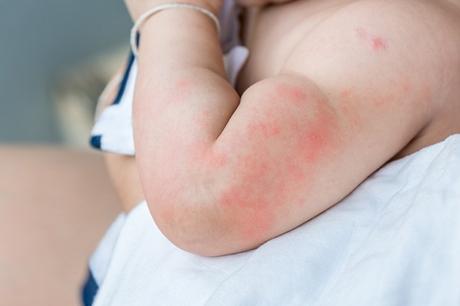
About 0.2 percent of children (and 0.5 percent of adults) have a fish allergy. Only about 9 percent of children with a tree nut allergy lose their sensitivity over time. Tree nuts (like walnuts, Brazil nuts, and cashews).While earlier studies found that peanut allergy was persistent, more recent studies suggest that one quarter or more of children allergic to peanuts lose their sensitivity over time. Between 0.4 and 1.3 percent of children are affected by peanut and/or tree nut allergy. Allergies to peanuts and tree nuts coexist in many cases. Almost half of cases resolve by age 2, and the majority resolve by adulthood. Egg allergy affects 1 to 9 percent of children.

Most cow's milk allergies are outgrown – only 0.2 percent of adults have a milk allergy. This is the most common food allergy in babies and young children, affecting about 2.5 percent of children during the first two years of life. The top eight food allergens account for 90 percent of food allergies in the United States: Most common food allergies in childrenĪny food can cause an allergy, but the most common food allergens for young children are called "highly allergenic" foods. More than half of children with milk and egg allergies can tolerate milk and egg that's been extensively heated in baked foods, for example. Also, some children can tolerate an ingredient when it's baked or cooked into other foods but not when it's eaten on its own.

For instance, your child may eat eggs, milk, or ground nuts in a cookie. Your child may be exposed to an ingredient when it's combined with something else. A child with an egg allergy, for instance, might not have a reaction the first few times they eat eggs – but eventually symptoms will appear. Another example is eczema, which is dry, scaly patches of skin that show up on a child's face, arms, trunk, or legs.Ĭhildren can react to a food even if they've eaten it before without any problem. If your child has chronic symptoms – for example, gastrointestinal problems like vomiting or diarrhea – they could be caused by something else and a food allergy. If your child's having stomach problems as well as skin problems, for example, it indicates that they're having a more severe reaction than one that's isolated to just their stomach or just their skin.Ĭhronic or ongoing symptoms can make diagnosis harder. Symptoms involving more than one part of the body are more concerning. What else to know about food allergy symptoms:
#CASHEW ALLERGY SKIN RASH BABIES HOW TO#
Your child's doctor can provide you with an action plan, including instructions on how to manage an allergic reaction. Even if the first reaction was mild, the next one might be severe. You may be referred to a pediatric allergist for testing. If your child consistently has symptoms within two hours of eating a certain food, ask their doctor about getting an evaluation.A cool bath may help with itching, but limit it to about 10 minutes so your child doesn't become chilled.

Ask your child's doctor or pharmacist for the proper dosage. If your child is at least 12 months old, antihistamines such as cetirizine (Zyrtec) or diphenhydramine (Benadryl) can help with milder reactions, like hives.Keep an eye on your child, and call the doctor if your child seems to be getting worse, or if hives last longer than 24 hours.(Milder food allergy symptoms can develop into more severe symptoms.) Call 911 if your child develops any severe reactions.If your child has any of these milder symptoms after eating a new food:


 0 kommentar(er)
0 kommentar(er)
